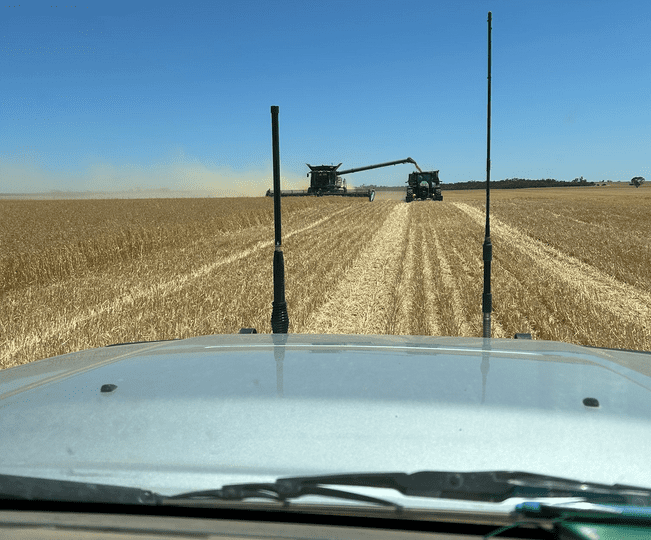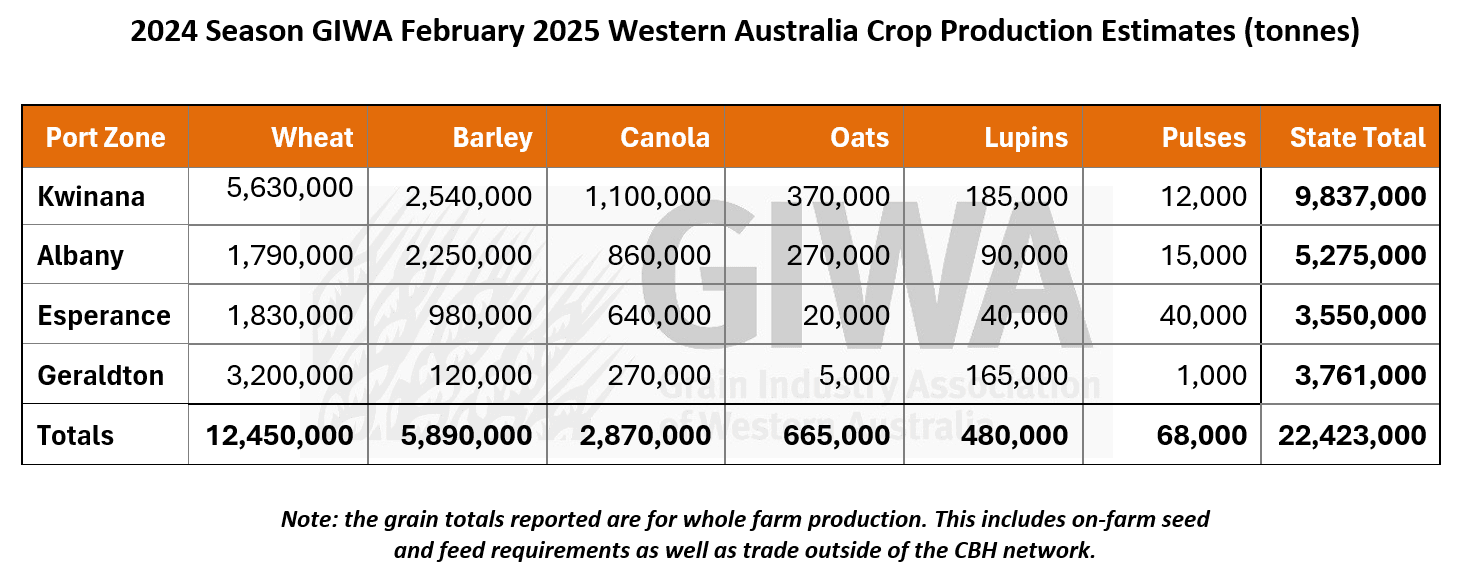
Harvesting cereals at the back end of harvest in January in the Kulin district. Photo: Tim Barndon
Western Australia’s Crop Production Estimates for 2024-25
The Grain Industry Association of Western Australia (GIWA) has completed its crop estimate for the 2024-25 season, projecting a total yield of 22.42 million tonnes (Mt). This figure represents an increase from the previous estimate of 19.88 Mt issued in December, during the ongoing harvest period, positioning this year’s output as the third-largest in the state’s history, trailing behind the record yields of 24 Mt in 2021-22 and 26 Mt in 2022-23.
According to report author Michael Lamond, the warmth experienced during the winters of these bumper years has played a significant role in crop production. Notably, the winter of 2021 was recorded as the warmest, with 2022 surpassing it by 7 percent, and 2024 exhibiting even higher temperatures. Mr. Lamond emphasized that “this trend of warmer growing seasons appears to be an overriding influence on grain production in Western Australia.” In contrast, winter 2023 was marked as one of the coldest since the 1970s.
The 2023 season witnessed notably dry conditions in the northern agricultural zones, although the remainder of the state experienced rainfall in the decile range of 6-8. Nonetheless, only 15 Mt of grain was harvested from a planted area exceeding 8.3 million hectares (Mha). Mr. Lamond noted that “all three record production years were also marked by record areas planted, with approximately 9 Mha sown.”

Transition from Sheep Farming to Cropping
Mr. Lamond indicated that the ongoing trend of increased cropped areas is likely to persist, largely due to the decline in sheep farming in Western Australia. He noted that “for every 1 million sheep that leave farms and are not replaced, an extra 300,000-500,000 hectares become available for cropping, depending on the rainfall zone.” There has been a noticeable increase in cropped areas within the medium to higher-rainfall zones, where sheep farming has become less significant.
The transition from 2023 to 2024 highlights this change, with an increase of 7-10 percent in cropping areas, primarily as pasture is replaced due to the exodus of sheep. While the crop area has gradually risen over the past five to ten years, its contribution to the state’s overall tonnage has increased disproportionately, largely because the areas transitioning from sheep to cropping are situated in regions with higher and more consistent rainfall.
This trend is particularly evident in the Albany port zone, which recorded its highest tonnage ever in 2024. Mr. Lamond attributed this success to favorable conditions, including minimal frost and waterlogging, alongside the expanded crop area.
The Role of Fallow Land
Mr. Lamond further explained that although 2024 was classified as a lower-decile rainfall year compared to the record years of 2021 and 2022, the high area of fallow land sown in preparation for the upcoming season played a crucial role. The area of fallow land entering the 2024 season was about 1 Mha, significantly higher than the typical 300,000 hectares. This strategy helped crops yield results that were close to or exceeded long-term average grain yields in lower-rainfall regions south of the Geraldton port zone.
This substantial area of fallow effectively mitigated the risks associated with lower rainfall, providing a buffer for those regions. Mr. Lamond noted that multiple smaller factors have cumulatively contributed to the impressive outcomes for the 2024-25 season, with the majority of these influences being attributed to human decisions rather than climatic conditions. The adoption of modern farming practices and the ability of growers to quickly adapt have significantly enhanced consistency across varying seasonal conditions.
He also highlighted that grain yield estimates prior to harvest were sometimes as much as 20 percent lower than actual deliveries in certain regions—a stark contrast to past years when such discrepancies would have resulted in significant delivery delays. However, infrastructure upgrades have enabled most regions to manage the substantial tonnages produced in recent record-setting years with relative ease.
Despite some rain occurring just prior to and during early harvest phases, which led to downgrades in grain quality, the overall infrastructure and adaptability of the industry have proven resilient. Mr. Lamond concluded that while testing for falling numbers slowed down delivery cycles, the overall performance of the sector remains strong.
Source: GIWA
For further details on Western Australia’s wheat, barley, canola, oat, and lupin crops, please refer to the full report available on the GIWA website.